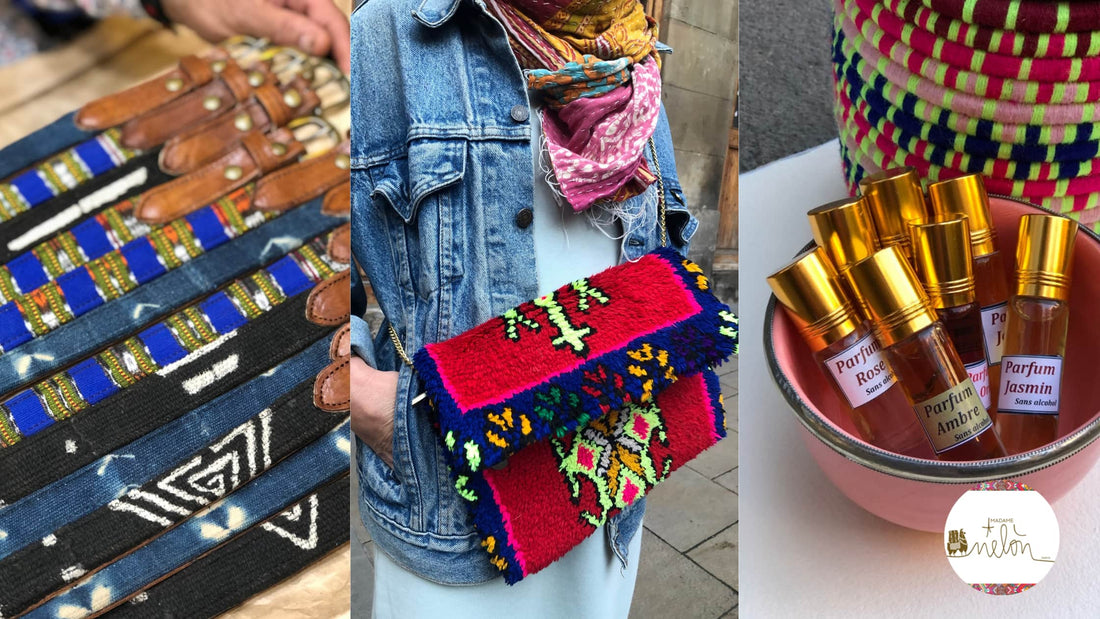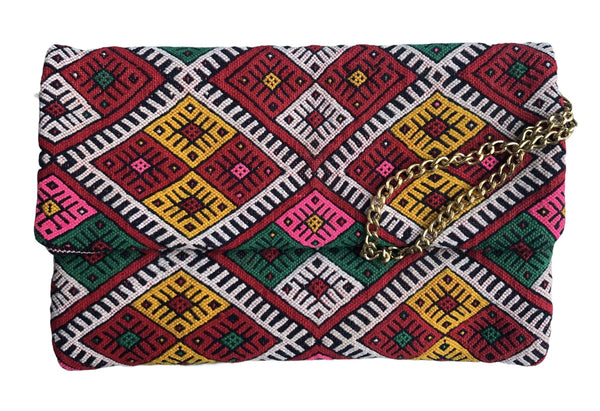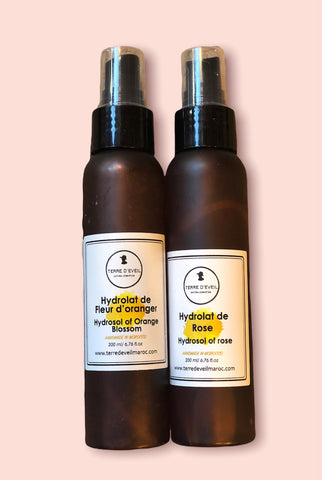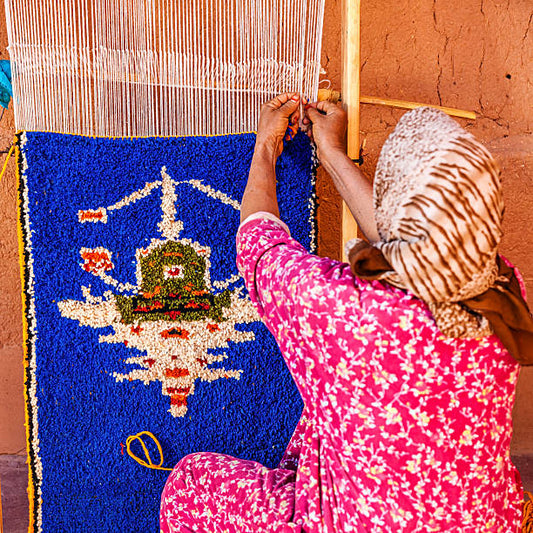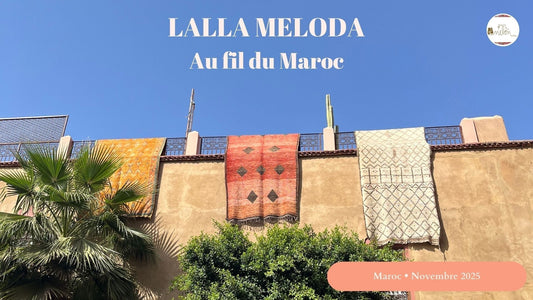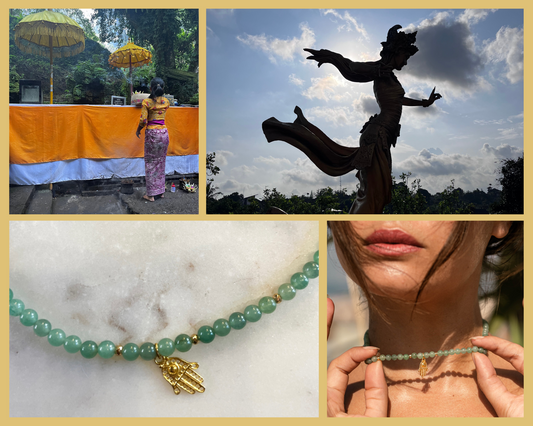Pottery, weaving, leather goods, silver jewelry... Morocco is a country where craftsmanship is particularly developed and recognized. Moroccan craftsmanship is colorful and rich in traditions, which is why Madame Melon has decided to include them at the heart of its product line for years. It's one of the most important sectors after tourism, and a way for Morocco to shine beyond its borders thanks to its traditions, arts, and ancestral manufacturing techniques.
By working alongside Moroccan artisans since our beginnings, we've developed a unique understanding of Moroccan craftsmanship. This is what we're going to share with you today in this article. Buckle up, and expect a warm and fragrant journey to Morocco!
What is Moroccan craftsmanship?

The Berbers , the first inhabitants of Morocco, were pioneers in many fields. They are responsible for traditional kilim rugs, woven from sheep's wool, camel's wool, linen, or silk; silver jewelry engraved with colored gemstones; and the first pottery and kitchen utensils. Berber art is still one of the most famous Moroccan crafts.
But each region of Morocco has developed a specific local craft, based on a technique or natural material specific to the region.
Thus, Fez is mainly known for its tanneries (leather) and metalwork (copper or silver).
Marrakech is famous for its leatherwork (babouches, cushion covers, furniture), its embroidered or woven kilim or Berber fabric rugs, and its beautiful wrought iron objects such as lanterns and mirrors.
Essaouira also offers a wide range of Moroccan crafts, but stands out for its objects made from Thuya, a precious wood from the Atlas Mountains, and its creations made from sorrel or raffia (baskets or mules).
In Rabat, where Amazigh and Andalusian cultures have intertwined, ceramics are very present, with varied colors and patterns. Ceramic colors vary from one region to another: Chefchaouen is known for its blue ceramics, while Safi offers more yellow ceramics and Meknes green.
What are the objects found in Moroccan crafts?
The carpets
What would Morocco be without its large, colorful rugs, their patterns bearing symbols and centuries-old stories? Rugs are an integral part of Moroccan craftsmanship. They can be made using several techniques, but kilim rugs, woven with wool, cotton, or linen, are the most traditional. Mostly woven by women, kilim rugs are colorful Moroccan rugs, featuring geometric patterns that tell the story of the people who wove them. Berber populations made them to accompany them on their many travels, or to tell the story of their tribe in a visual way. Each geometric symbol carries a meaning, and by learning to decode these symbols, you can read the history of the Berber peoples through the rugs.
We also create pouches from Asilah rugs , another style of rug, thicker, and also woven by Berber women.
Leather accessories
Ceramics
Ceramics are a flagship product of Moroccan craftsmanship. It's impossible to miss the large ceramic plates or small bowls with colorful and delicate patterns, often featured on the walls of shops or restaurants! At Madame Melon, we love them for adding a touch of exoticism to your kitchen, making a useful and delicate gift, or decorating your home in an original and colorful way!
Engraved jewelry
Antique Berber silver jewelry is one of Morocco's traditional jewelry pieces. Berber jewelry is typically engraved with motifs and symbols, or set with semiprecious stones such as turquoise.
Amazigh bangle , Berber bracelet set with turquoise , Touareg silver necklace : you can find a selection of Moroccan jewelry in silver or gold plated in our online store or in our Barcelona store.
Cosmetics: argan, rose, orange blossom
Those who have already been to Morocco know: this country is a land rich in flowers and fruit trees with sweet scents and incredible cosmetic properties.
First of all, argan, a nut that grows in the Essaouira region, is used for cooking and cosmetic oils. It has moisturizing and health-promoting properties. You can find it in our Atlas Cedar or Rosemary soaps.
The rose is also a flower widely used in Moroccan cosmetics. It is found to perfume body lotions, balms, shampoos and soaps, but also floral waters for the face , just like orange blossom.
In addition to being very present in perfumery and cosmetics, orange blossom is also found in traditional Moroccan pastries, such as gazelle horns.
Raffia accessories
Raffia is a straw widely used in Moroccan crafts to make shoes, bags, and accessories. It's a particularly popular resource in the Essaouira region. You can find traditional Essaouira raffia mules in our e-shop.
Wrought iron work
Marrakech and Fez are two cities where wrought ironwork is omnipresent. Moroccan craftsmanship uses the wrought iron technique to make lanterns, lampshades, and lamps. Wrought iron craftsmanship also includes brass mirrors , with geometric or whimsical shapes. We love them for adding a touch of themed decor to your home!
Where to find Moroccan crafts?
Our first piece of advice is to head directly to Morocco if you can. This is where you'll be able to find the most authentic collections, negotiate the best prices, and get tailor-made products. Marrakech, Fez, Essaouira, Rabat, Agadir... all the cities and villages of Morocco offer Moroccan crafts in their souks and independent boutiques.
Not planning a trip to Morocco anytime soon? Madame Melon offers a lovely selection of Moroccan handicrafts in its online or in-store boutique. From Berber silver jewelry to kilim clutches, wicker mules, and cosmetics made with argan oil or orange blossom, you can find a wide selection of Moroccan handicrafts in the boutique.

